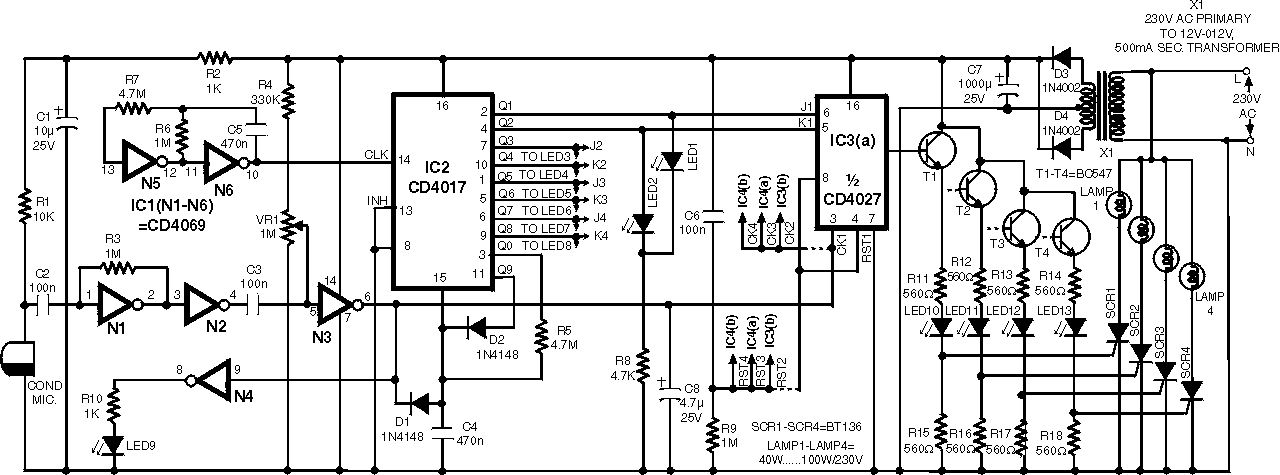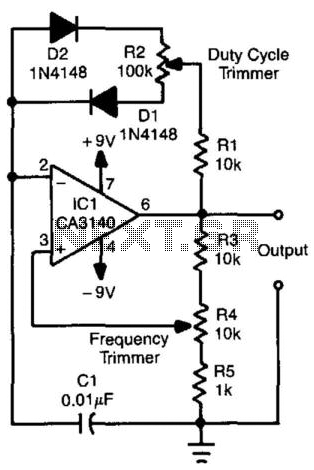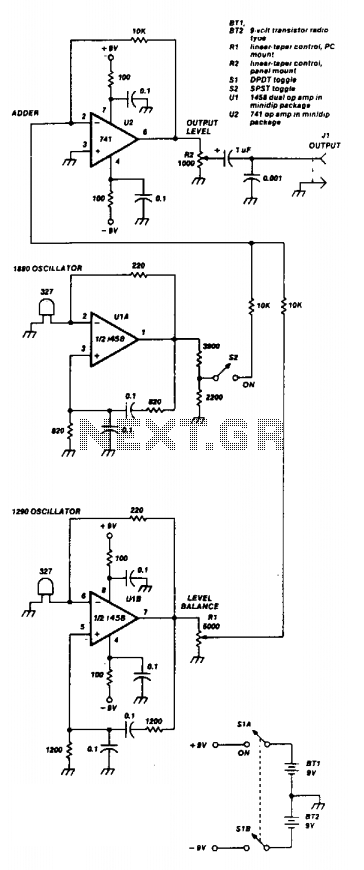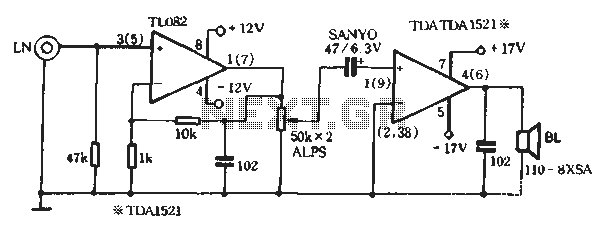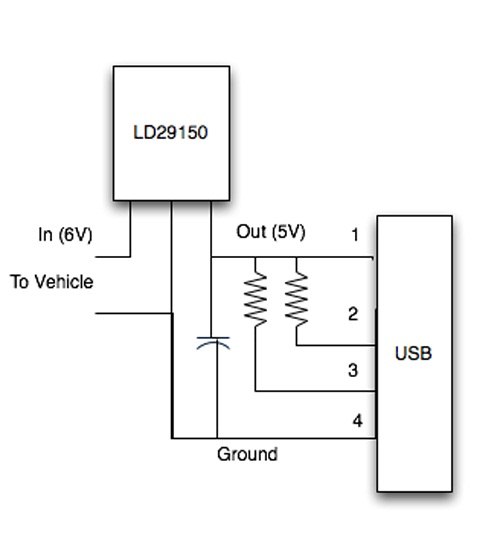
3-state sound generator with LM556
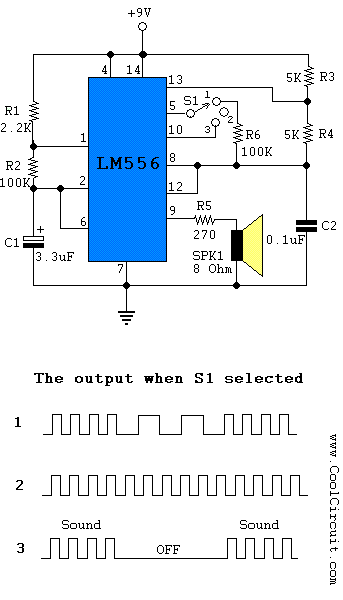
A 3-state sound generator utilizing the LM556. The LM556 is a dual timer that can function as two independent LM555 timers, sharing only VCC and ground. Timing can be defined by the user.
The circuit design for the 3-state sound generator using the LM556 involves configuring the two timers in a manner that allows for distinct sound generation states. Each timer can be set up to generate different frequencies or duty cycles, thereby producing varied sound outputs.
The LM556 consists of two identical timer circuits that can operate independently. Each timer has its own timing components, which typically include resistors and capacitors connected to the discharge and threshold pins. By selecting appropriate resistor and capacitor values, the timing intervals can be adjusted to achieve the desired sound characteristics.
To implement the 3-state functionality, the circuit may utilize a switch or microcontroller to toggle between the different sound states. For instance, Timer A could be configured to produce a square wave at a specific frequency, while Timer B generates a different frequency. The output from both timers can be mixed using a simple resistor network or an operational amplifier configured as a summing amplifier.
The output signals can be fed into a speaker or buzzer, allowing for audible sound generation. Additionally, incorporating a low-pass filter might be beneficial to smooth out the output waveform, reducing high-frequency noise and enhancing sound quality.
The power supply for the LM556 should be stable and within the specified voltage range, typically between 4.5V to 15V. Proper decoupling capacitors should be placed near the power pins to minimize voltage fluctuations and ensure reliable operation.
In summary, the 3-state sound generator circuit using the LM556 is a versatile design that allows for creative sound generation by leveraging the independent operation of the dual timers. By adjusting the timing components and utilizing switching mechanisms, a variety of sound outputs can be achieved, making it suitable for applications in toys, alarms, and electronic musical instruments.3-state sound generator with LM556 . LM556 is a dual timer that can be operated as two LM555. The two timers operate independently of each other sharing only VCC and ground.You can define timing. 🔗 External reference
The circuit design for the 3-state sound generator using the LM556 involves configuring the two timers in a manner that allows for distinct sound generation states. Each timer can be set up to generate different frequencies or duty cycles, thereby producing varied sound outputs.
The LM556 consists of two identical timer circuits that can operate independently. Each timer has its own timing components, which typically include resistors and capacitors connected to the discharge and threshold pins. By selecting appropriate resistor and capacitor values, the timing intervals can be adjusted to achieve the desired sound characteristics.
To implement the 3-state functionality, the circuit may utilize a switch or microcontroller to toggle between the different sound states. For instance, Timer A could be configured to produce a square wave at a specific frequency, while Timer B generates a different frequency. The output from both timers can be mixed using a simple resistor network or an operational amplifier configured as a summing amplifier.
The output signals can be fed into a speaker or buzzer, allowing for audible sound generation. Additionally, incorporating a low-pass filter might be beneficial to smooth out the output waveform, reducing high-frequency noise and enhancing sound quality.
The power supply for the LM556 should be stable and within the specified voltage range, typically between 4.5V to 15V. Proper decoupling capacitors should be placed near the power pins to minimize voltage fluctuations and ensure reliable operation.
In summary, the 3-state sound generator circuit using the LM556 is a versatile design that allows for creative sound generation by leveraging the independent operation of the dual timers. By adjusting the timing components and utilizing switching mechanisms, a variety of sound outputs can be achieved, making it suitable for applications in toys, alarms, and electronic musical instruments.3-state sound generator with LM556 . LM556 is a dual timer that can be operated as two LM555. The two timers operate independently of each other sharing only VCC and ground.You can define timing. 🔗 External reference
